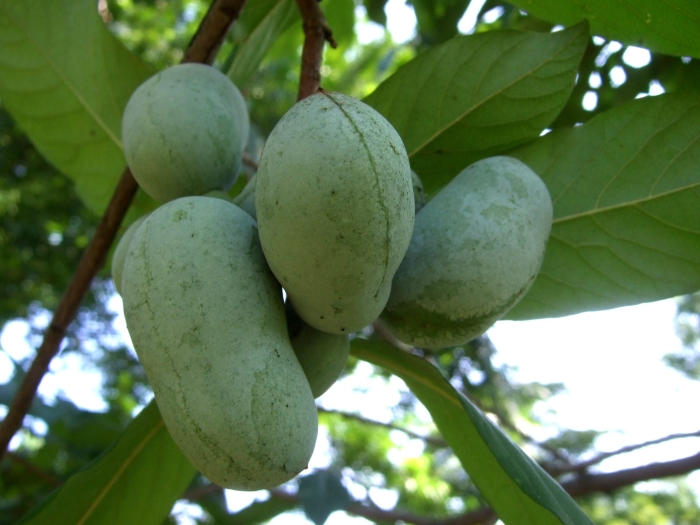American Pawpaw
(Asimina triloba)
American Pawpaw (Asimina triloba)
/
/

Wendell Smith
CC BY 2.0















































































Estimated Native Range
Summary
The American Pawpaw is valued for its unique fruit, low maintenance, and tolerance of different light conditions. It is suitable for hardiness zones 5-9 and takes 7-8 years from seedling to fruiting. The tree produces inconspicuous brown, yellow, purple, and red flowers in the spring, which are pollinated by flies and beetles. Pawpaw trees are often planted as an understory tree in larger gardens and naturalized areas. They prefer well-drained, fertile soil and can tolerate full sun to part shade. While generally pest-resistant, they can suffer from pawpaw-specific diseases such as pawpaw decline.CC BY-SA 4.0
Plant Description
- Plant Type: Tree, Shrub
- Height: 15-20 feet
- Width: 15-30 feet
- Growth Rate: Moderate
- Flower Color: Brown, Purple
- Flowering Season: Spring
- Leaf Retention: Deciduous
Growth Requirements
- Sun: Part Shade
- Water: Medium
- Drainage: Fast, Medium
Common Uses
Bird Garden, Border Plant, Butterfly Garden, Deer Resistant, Edible*Disclaimer: Easyscape's listed plant edibility is for informational use. Always verify the safety and proper identification of any plant before consumption., Erosion Control, Fire Resistant, Fragrant, Rabbit Resistant
Natural Habitat
native to the understory of rich, moist, deciduous forests, often near river bottoms and flood plains in the eastern United States and southeastern Canada
Other Names
Common Names: Indian-Banana, American Papaw, Paw-Paw, Paw Paw, Dog-Banana, Papau, Asimina, Asiminier
Scientific Names: , Asimina triloba, Annona triloba, Annona pendula, Asimina campaniflora, Asimina conoidea, Asimina glabra, Asimina grandiflora, Asimina virginiana, Orchidocarpum arietinum
GBIF Accepted Name: Asimina triloba (L.) Dunal